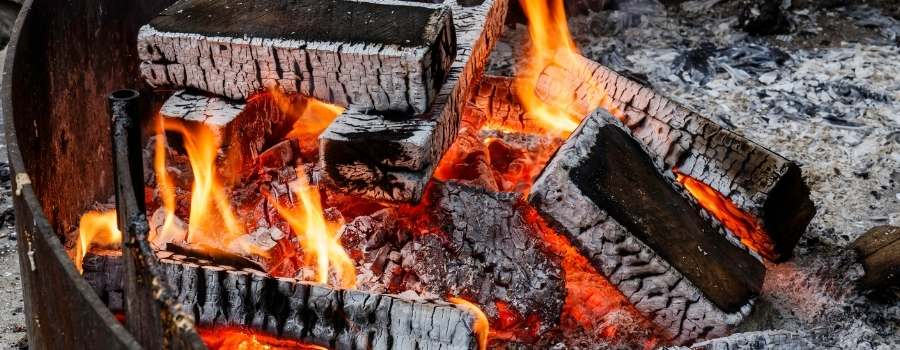
For anyone who has grown up with a fireplace knows all about ash build-up and the cleanup that comes with them. Fire pits are no different, but luckily don’t require chimney cleaning.
But ash is definitely going to be something you’ll have to contend with. If you use your fire pit often, then you will end up with quite a bit of ash over the year…luckily, there are a variety of ways to make use of it.
The first thing that pops into most people’s minds is using ash in their garden…but I wanted to see if I could come up with a few more, so here are 19 creative and useful ways that people have been using their fire pit ashes.
- Fertilize Plants
- Weed Barrier in Garden Beds
- Mulch
- Compost
- Kill/Deter Slugs and Snails
- Substitution for Diatomaceous Earth to Control Pests
- Prevent Fire Pit From Rusting
- Deodorizer (Fridge, Litter Box, Musty Rooms, Shoes)
- Clean and Deodorize the Grill
- Soap Making (Potash)
- Sanitizing Wood Cutting Boards
- Prevent Freezing on Uninsulated Pipes
- Remove Skunk Smell
- Toothpaste Substitute for Sensitive Teeth/Gums
- Make an Ice Pack to Keep Food Cold on Picnics
- Clean Tarnished Silver
- Remove Rust from Tools & Wheelbarrow Baskets
- Remove Burned Food From Pots (or Scorched Grout)
- Fireplace Cleaner
Fertilize Plants
Alright, we’ll get the obvious out of the way first. One great use for fire pit ash is to use it as a fertilizer in your garden to add potassium, phosphorus, and other nutrients.
Potassium and phosphorus are good for plants because they help with root development, disease resistance and they promote healthy blooming/fruiting.
Weed Barrier in Garden Beds
Another great use for fire pit ash is using it around the base of your plants. Just sprinkle about an inch or so all the way around them (about once every two weeks) then scratch into the soil with a hoe or rake.
The ash will help to suppress the weeds and prevent them from sprouting up around your plants, which is just one more thing you won’t have to worry about!
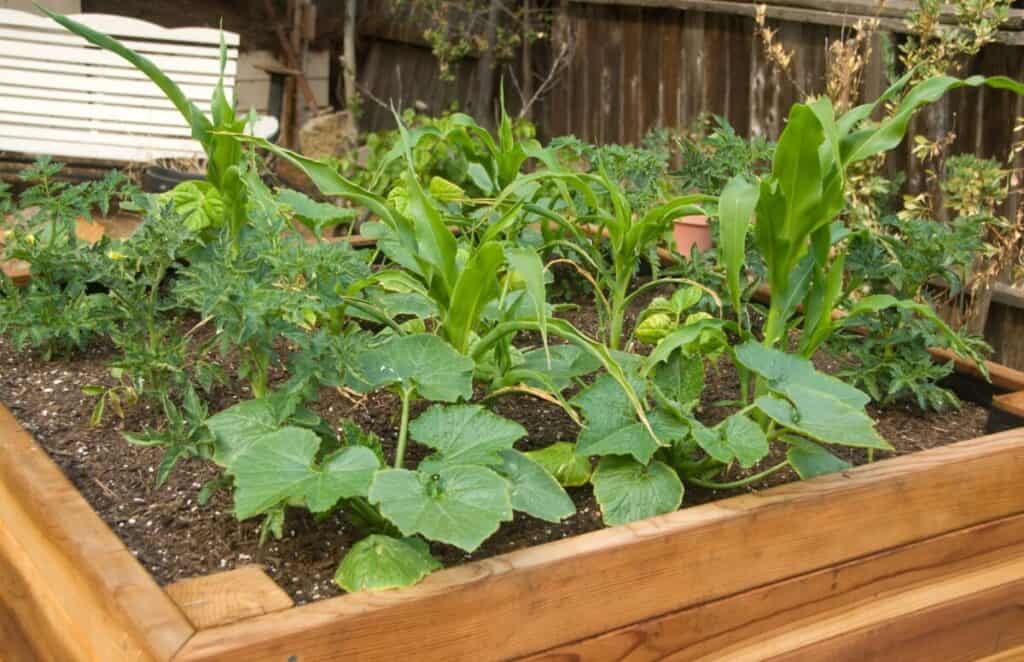
Mulch
One more great use for fire pit ash is to use it as mulch. Just like sprinkling ash around your garden plants, you’ll want to spread a layer (about an inch or so deep) about once every two weeks all over your flower beds and shrubs.
Firepit ash will help deter the growth of weeds while boosting the nutrients in your plants, vegetable, or flower. You can also add a little bit into the soil around your plants when planting them to give them a little jump start for growth.
Compost
Add some fire pit ash to your compost pile to speed up the decomposing process. The ash will help to keep away pests and flies, as well as lock in a lot of the moisture which speeds up things considerably!
It also aids with aeration so you won’t have to worry about turning it nearly as much either. In case this isn’t apparent yet…ashes from your fire pit are great for the garden!
To do this, all you need is some organic material (like leaves or straw) and moisten it slightly before adding in about a half-inch layer of ash. The dust-like particles in the ash will help with aeration while providing potassium, phosphorus, and other nutrients.
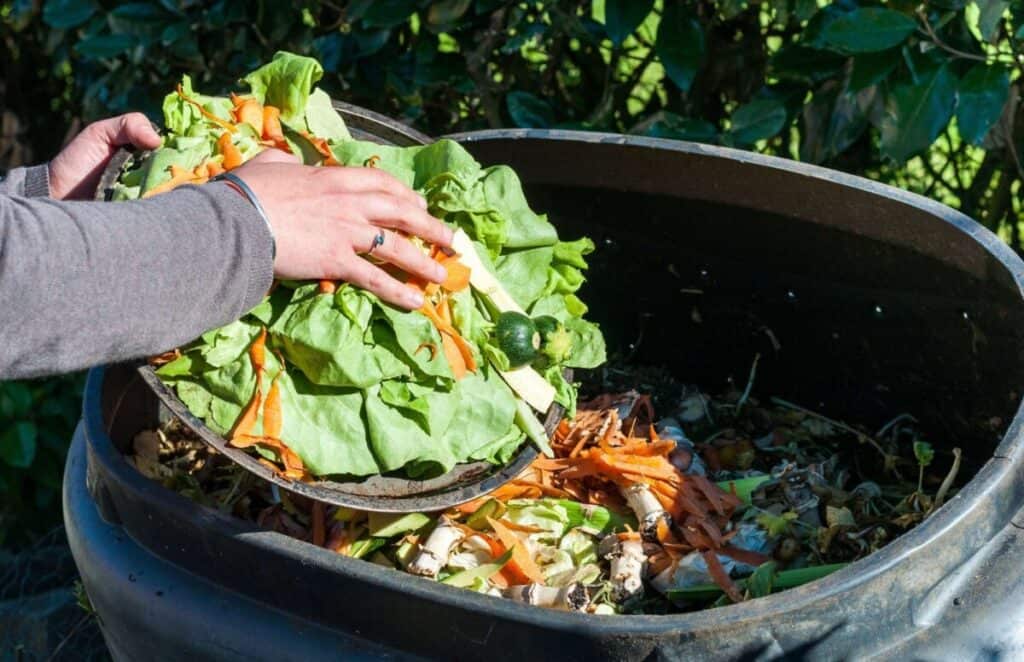
Kill/Deter Slugs and Snails
If you have a problem with slugs and snails in your garden, then fire pit ash is just the thing for it!
The dust-like texture of ashes actually cuts up their bodies while they crawl across them which will kill or at least deter them from coming back…not the most humane deterrent, but if they are giving you a hassle you do what you have to do.
If you use fire pit ash on any plants that you plan to use for cooking make sure you give them a thorough cleaning. While wood ash isn’t considered toxic, it has components that will make your food taste very bitter and could upset your stomach.
Instead of on your garden plants, sprinkle fire pit ash around the perimeter of your garden to help keep slugs and snails out…just sprinkle some about an inch deep all the way around and scratch into the dirt with a hoe or rake for best results.
Keep in mind that you’ll need to reapply this every few days, as rain can wash it away quickly!
You might also want to look into slug traps if the problem is really bad…or hire out some chickens which will happily eat up all those slugs and snails.
Substitution for Diatomaceous Earth to Control Pests
Diatomaceous earth works well as an organic way of controlling pests such as ants, roaches, and various other insects that may be bothering your plants or garden beds. It works by dehydrating the pest until they die from lack of water.
Diatomaceous earth substitutes work in much the same way, although they are generally made from different ingredients than diatomaceous earth itself which makes them safer to use around pets and children. They also tend to be less expensive than buying food-grade diatomaceous earth!
Firepit ash contains many of the same nutrients that diatomaceous earth contains, but does have a small cost associated with it. If you’re already using your fire pit on a regular basis you’re going to be producing copious amounts of ash…so you might as well use the free stuff!
Since people new to fire pits and uses for ash might not be familiar with diatomaceous earth, I thought I’d provide a little definition:
What Is Diatomaceous Earth?
Diatomaceous earth is a white, powdery substance obtained from the fossilized remains of tiny aquatic animals known as diatoms. Their skeletons are composed of silica, which is a natural mineral. Diatoms accumulated in streams, rivers, lakes, and oceans throughout time and were eventually buried in sediments.
This is a common substance used in pest and insect control so it can be used in garden beds, but many people try to use alternatives due to the irritation to the nose and eyes that diatomaceous earth causes.
Prevent Fire Pit From Rusting
Another way to use fire pit ash is as a preventative measure against rusting on your steel fire pit.
While some may recommend using baking soda, all you really need to do is sprinkle a light layer of ashes into the bottom before placing any wood on top or adding lighter fluid and setting that first log ablaze. This will help to prevent rust from forming and damaging your fire pit.
Deodorizer (Fridge, Litter Box, Musty Rooms, Shoes)

Wood ash contains a number of alkaline and acidic components that work to neutralize most odors.
If your cat’s litter box is starting to smell, try putting some on top of the litter before replacing it with fresh clean stuff. This will help to repel any cats that are digging around in there looking for a place to do their business…as well as keep it smelling nice and fresh without having to buy all-natural commercial
If your shoes are starting to smell, try putting some ashes into them before leaving them outside overnight so that they can soak up any lingering odors throughout the night. You might want to do this with work boots or other shoes that you wear outside and don’t want to ruin!
If your kitchen is starting to smell a little funny, try sprinkling some ashes on the bottom of the trashcan before replacing it with a fresh bag for another deodorizing effect.
Clean and Deodorize the Grill
If you have a charcoal grill, using fire pit ash to clean it out is another excellent way of taking advantage of its strong alkaline properties. Wood ash will absorb food odors from grease drippings that may have accumulated on the grill during previous uses.
When you’re ready to use it, spread some ash directly onto any leftover charcoals which should help to soak up the oils…then just brush them away and continue with your grilling!
Firepit ash is also great at removing that pesky carbon build-up that can sometimes form between uses on your grill. Just sprinkle some ash onto the grates and let it sit for a while before brushing away with a wire brush…you might be amazed at how much better clean they will look!
Soap Making (Potash)
This one might be more geared toward the brave and adventurous, but you can make a type of soap and other cleaning product from fire pit ash called potash.
Potash is made from wood ash and water, which are boiled together until the liquid evaporates. This leaves behind a residue that can then be used for soap making or other purposes.
Potash originated from Native Americans and is still used today by those who have access to large amounts of wood ash from campfires, fireplaces, outdoor grills, or other sources.
This process might sound complicated…but don’t let it deter you! There are many people out there that make their own potash using this method with great success and little complication.
Sanitizing Wood Cutting Boards
The alkaline components of fire pit ash are perfect for killing bacteria on wooden cutting boards. Just mix some finely ground ashes with water to create a paste, then rub it into the board and let sit overnight or for at least two hours before rinsing clean!
If you’re camping for an extended period of time and have limited access to cleaning products, then this is a great way to help cut down on germs and bacteria that can build up on cutting boards and make you sick.
It is important to note, however, that the wood used for cutting boards can be damaged if it becomes too wet and absorbs water from this paste…so don’t let it soak! Just use a good amount of pressure when applying and then rinse clean as soon as possible afterward.
Prevent Freezing on Uninsulated Pipes
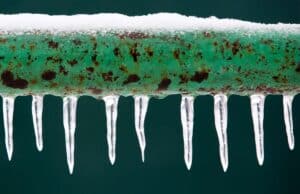
Firepit ash can also be used to help insulate pipes and prevent them from freezing during the winter. The alkaline components in fire pit ash will actually cause water to freeze at a higher temperature than normal, which is great for preventing those cold snaps that tend to damage your home and limit its efficiency!
Try sprinkling some ashes around the area where you know your pipes are located, and then cover with some old newspapers or other material to keep it in place.
This is a great way of insulating without having to go out and buy expensive insulation materials! Just make sure that all ashes are cleaned up so they don’t cause any problems when coming into contact with water after the winter season has passed.
It’s also important to note that if you live in a particularly cold area or the temperatures are supposed to plummet to extreme lows, then you should properly insulate your pipes…fire pit ash can only do so much.
Remove Skunk Smell
Firepit ash can also be used to remove the distinctive smell of skunk from dogs. The strong alkaline properties are great for breaking down some of those tough sulfur compounds that cause a terrible odor on your dog!
Make sure you avoid your pet’s eyes since the ash will be pretty coarse and can cause irritation.
Brush or work some ash into your dog’s fur and let it sit and absorb the odor for about 15 to 20 minutes. Rinse with water and repeat if needed!
Be careful, though…if you have a white dog then this process will temporarily make their fur look grey due to the ash particles being deposited onto it. Just brush away once your dog is rinsed clean again.
Toothpaste Substitute for Sensitive Teeth/Gums
Here’s another one for the adventurous.
Firepit ash can be used as a toothpaste substitute for those who have sensitive teeth or gums. The alkaline components are strong enough to kill some of the bacteria that cause bad breath and gum disease, yet gentle enough not to irritate your mouth!
This is a great alternative for those who have trouble with commercial toothpaste that contains fluoride. Be sure to rinse thoroughly and avoid swallowing!
Make an Ice Pack to Keep Food Cold on Picnics
If you’re going to be taking a picnic or just need an ice pack for your lunch and don’t have access to a freezer, then fire pit ash can help keep your food cooler for longer. Just mix some ashes with water in a Ziploc bag until it becomes slushy and place inside another plastic bag before putting it into your cooler with your food.
This will help keep all of your items cold and can be a great way to save on ice packs. Best of all, if you take care of them then they can be stored and saved to be reused.
Clean Tarnished Silver
Firepit ash can also be used as a great cleaner for tarnished silver jewelry and other items that may have been dropped into the wrong environment. The alkaline properties will help break down any sulfur-containing compounds on your item, restoring its luster after just one use!
Be sure to avoid using this method if you know your piece is very delicate or is a family heirloom. The grit from the ash may be strong enough to scratch them!
To clean with this method, start by creating a mixture of fire pit ash and water in a Ziploc bag until you get something with a mud-like consistency (it should still run slowly).
Now just place your silver item into the bag and seal it up before shaking to cover all areas. Let sit for half an hour, remove, and rinse with water until you get out all of the grit from the ash and your item is clean!

Remove Rust from Tools
We’ve all got them…those tools that have been in the family for years. They still work but likely have some rust patches on them.
If you mix wood ash with water and apply it to the area with rust, you’ll be able to easily break down some of that corrosion in no time. Use a soft cloth or brush and spread an even layer over the surface until it’s completely covered. Leave on for about 15 minutes before rinsing off with clean water…it should look like new!
Remove Burned Food From Pots and Pans
Just like those “hand-me-down” tools I just mentioned, most of us have various pots and pans that have been passed down from family and friends…and usually, they have long since lost their non-stick qualities.
Luckily, the abrasive nature of ash can be used to scrub away some of that burned food without doing too much damage. Just create a paste with ash and water or lemon juice, spread it on your pan, let sit for 20 minutes…and then start scrubbing!
All you have to do is rinse off when finished and this should leave behind an item with minimal scratches so you can enjoy that non-stick cooking surface again.
Fireplace Cleaner
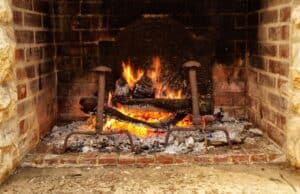
To come full circle, so to speak, fire pit ash has properties that will allow you to easily remove all of the soot and grime in just minutes!
Mix some ash with water until everything is very fine (you may need to use a blender or food processor for this part), apply to your fireplace using a sponge, and allow it to sit until dry.
Then wipe clean using a soft cloth and you’ll be left with a clean, gleaming fireplace ready for the colder months!
Now, this method does require some heavy scrubbing…so be sure you have the time to spend on getting your fireplace back in shape before trying it out!
Final Thoughts
Phew…there you have it. A whole list of ways to make use of that fire pit ash that we backyard enthusiasts always seem to have an abundance of.
Not all of these will appeal to everyone…I don’t plan to brush my teeth with wood ash anytime soon…but out of these 19 there should be at least one that stuck out to you, so give it a try!
For more articles on firepits and enjoying your backyard, check out these articles:
